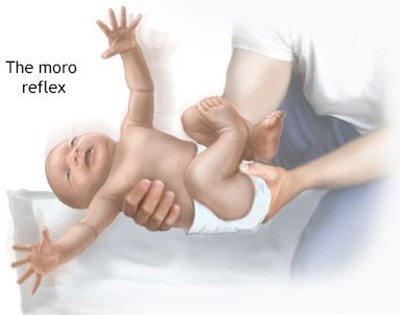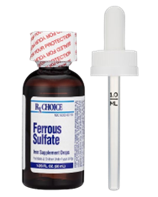The nurse is assessing a 6-month-old infant. Which response requires further evaluation by the nurse?
Has doubled birth weight.
Plays "peek-a-boo."
Demonstrates startle reflex.
Turns head to locate sound.
The Correct Answer is C
The startle reflex, also known as the Moro reflex, is a normal reflex in infants that is present at birth and usually disappears by 3-4 months of age. The reflex is elicited by a sudden loud noise or change in position, and the infant will extend their arms and legs, then bring them back in towards their body.
If a 6-month-old infant is still demonstrating the startle reflex, it may indicate a developmental delay or neurological issue and requires further evaluation by the nurse or healthcare provider.
The other responses are all normal developmental milestones for a 6-month-old infant. By 6 months of age, most infants will have doubled their birth weight, enjoy playing games like peek-a-boo, and have developed the ability to turn their head to locate sounds.

Nursing Test Bank
Naxlex Comprehensive Predictor Exams
Related Questions
Correct Answer is B
Explanation
The nurse should give the mother positive feedback about the way she administered the medication. Giving the infant orange juice after administering the iron drops is a good practice because vitamin C in the orange juice can enhance the absorption of iron. The other options (A, C, and D) are not appropriate actions for the nurse to take in this situation.

Correct Answer is A
Explanation
The boy's reported symptoms may indicate stress or anxiety related to his school experience. By asking the boy to describe a typical day at school, the nurse can gather information about the child's interactions with teachers and peers, academic performance, and any other potential sources of stress. This information can be used to develop an appropriate plan of care that addresses the child's emotional and physical needs.
Comparing vital signs or conducting a neurological assessment may not provide useful information in this case, and counseling the parents to pay more attention to the child is not a recommended intervention without first identifying the underlying cause of the child's symptoms.
Whether you are a student looking to ace your exams or a practicing nurse seeking to enhance your expertise , our nursing education contents will empower you with the confidence and competence to make a difference in the lives of patients and become a respected leader in the healthcare field.
Visit Naxlex, invest in your future and unlock endless possibilities with our unparalleled nursing education contents today
Report Wrong Answer on the Current Question
Do you disagree with the answer? If yes, what is your expected answer? Explain.
Kindly be descriptive with the issue you are facing.
